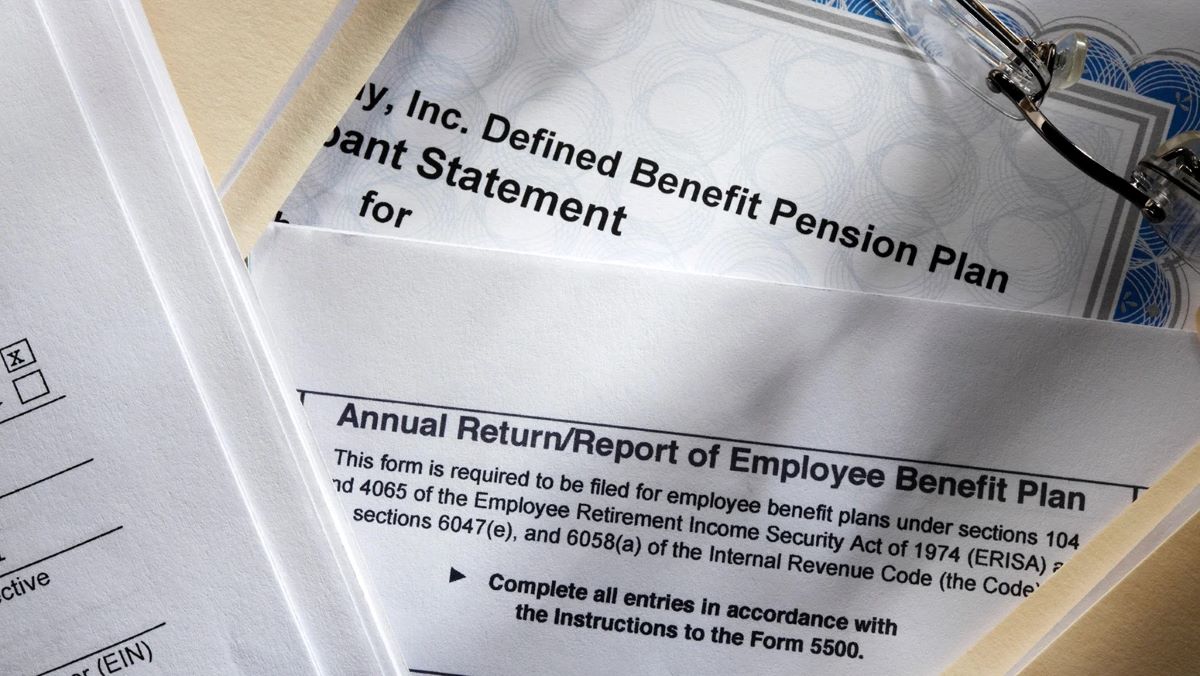Home>Finance>What Is The Purpose Of California’s State Compensation Insurance Fund?


Finance
What Is The Purpose Of California’s State Compensation Insurance Fund?
Modified: December 29, 2023
Discover the purpose of California's State Compensation Insurance Fund and how it contributes to the state's finance industry. Find out more about this vital financial institution!
(Many of the links in this article redirect to a specific reviewed product. Your purchase of these products through affiliate links helps to generate commission for LiveWell, at no extra cost. Learn more)
Table of Contents
- Introduction
- History of the State Compensation Insurance Fund
- Mandate and Purpose of the State Compensation Insurance Fund
- Structure and Governance of the State Compensation Insurance Fund
- Services Provided by the State Compensation Insurance Fund
- Benefits of the State Compensation Insurance Fund
- Challenges and Criticisms of the State Compensation Insurance Fund
- Conclusion
Introduction
The State Compensation Insurance Fund, also known as State Fund, is a vital component of California’s workers’ compensation system. It was established in 1914 as part of the grand bargain that was struck between employers and workers in the wake of the Industrial Revolution. The purpose of the State Compensation Insurance Fund is to provide a stable and affordable source of workers’ compensation insurance for businesses across the state.
California’s workers’ compensation system is designed to provide benefits to employees who are injured or become ill on the job. It operates on a no-fault basis, meaning that employees are entitled to benefits regardless of who was at fault for the accident. These benefits can include medical treatment, disability payments, rehabilitation services, and death benefits.
With its vast size and diverse economy, California faces unique challenges when it comes to providing workers’ compensation insurance. The State Compensation Insurance Fund plays a crucial role in addressing these challenges and ensuring that businesses of all sizes and industries have access to affordable insurance coverage.
In this article, we will explore the history, mandate, structure, services, benefits, and criticisms of the State Compensation Insurance Fund. By understanding the purpose and impact of this institution, we can gain valuable insights into how California’s workers’ compensation system functions and the role it plays in protecting workers and supporting businesses.
History of the State Compensation Insurance Fund
The history of the State Compensation Insurance Fund dates back to the early 20th century. In 1911, California enacted the first comprehensive workers’ compensation laws in the United States, following a series of devastating industrial accidents that highlighted the need to protect employees and provide them with coverage in the event of work-related injuries or illnesses.
Initially, private insurance companies provided workers’ compensation insurance to businesses. However, as the demand for coverage grew, so did the challenges associated with obtaining affordable and reliable insurance. Insurance companies were increasingly selective in offering coverage, leaving many businesses, especially those in high-risk industries, without access to insurance or facing exorbitant premiums.
In response to these concerns, the California Legislature established the State Compensation Insurance Fund in 1914 as a public enterprise. Its primary goal was to act as a competitive insurance provider in the workers’ compensation market, ensuring that businesses could obtain affordable coverage.
Over the years, the State Compensation Insurance Fund has played a vital role in stabilizing the workers’ compensation system in California. It has weathered multiple financial crises and industry challenges, adapting its operations to meet the evolving needs of businesses and workers.
One significant milestone in the history of the State Compensation Insurance Fund came in 2004 when California enacted workers’ compensation reform legislation. This reform aimed to address rising insurance costs and improve the efficiency of the system. As part of the reform, the State Fund underwent a significant overhaul, including restructuring its operations and implementing cost-saving measures.
Today, the State Compensation Insurance Fund remains a cornerstone of California’s workers’ compensation system. It continues to provide a stable and cost-effective source of insurance coverage to businesses across the state, ensuring that employees have access to the benefits they need in the event of work-related injuries or illnesses.
Mandate and Purpose of the State Compensation Insurance Fund
The State Compensation Insurance Fund operates under a clear mandate and purpose outlined by the state of California. Its primary mission is to provide workers’ compensation insurance to California businesses and ensure that injured workers receive prompt and appropriate benefits.
The mandate of the State Compensation Insurance Fund is multi-faceted. It includes:
- Guaranteeing the availability of workers’ compensation insurance to businesses across California, including high-risk industries that may face challenges in obtaining coverage from private insurers.
- Promoting fair and stable rates for insurance premiums, preventing excessive fluctuations that can burden businesses and jeopardize the overall stability of the workers’ compensation system.
- Prioritizing safety and risk management by offering educational programs and resources to help businesses prevent workplace injuries and promote a culture of safety.
- Providing efficient claims processing and administration, ensuring that injured workers receive timely access to medical treatment, disability benefits, and rehabilitation services.
- Acting as a fiscally responsible entity, operating in a financially sound manner with the goal of maintaining the long-term sustainability of the State Compensation Insurance Fund.
The purpose of the State Compensation Insurance Fund aligns with its mandate and broader objectives. By providing insurance coverage to businesses, the State Fund contributes to the overall stability of the workers’ compensation system. It ensures that businesses, regardless of their size or industry, can access affordable insurance options, allowing them to comply with legal requirements and protect their employees.
The State Compensation Insurance Fund also plays a critical role in safeguarding the well-being of injured workers. Through efficient claims processing and administration, it seeks to minimize delays and provide timely benefits to those in need. Furthermore, by prioritizing safety and risk management, the State Fund supports efforts to prevent workplace injuries and illnesses, ultimately improving the overall health and safety of California’s workforce.
Overall, the mandate and purpose of the State Compensation Insurance Fund revolve around providing stability, fairness, and efficiency in California’s workers’ compensation system. It strives to balance the needs of businesses and workers, ensuring that both are adequately protected and supported. Through its efforts, the State Fund contributes to a healthier and more productive work environment for all.
Structure and Governance of the State Compensation Insurance Fund
The State Compensation Insurance Fund operates under a specific structure and governance model to maintain accountability and transparency in its operations. The organization is structured as a quasi-public entity with a unique governance structure that includes both public officials and industry representatives.
The State Fund is governed by a Board of Directors, consisting of nine members appointed by the Governor of California. The Board of Directors includes representatives from employers, labor organizations, and the general public. This diverse representation ensures that the interests of various stakeholders are taken into account when making important decisions.
The Board of Directors is responsible for overseeing the strategic direction, policies, and operations of the State Compensation Insurance Fund. They establish the general guidelines and principles that guide the organization’s activities. The Board also appoints the President and CEO of the State Fund, who oversees the day-to-day operations and ensures the implementation of Board-approved policies.
In addition to the Board of Directors, the State Compensation Insurance Fund operates through various internal departments and divisions. These units are responsible for different aspects of the organization, including underwriting, claims processing, risk management, and financial management.
The structure of the State Fund allows for effective collaboration and decision-making. The involvement of industry representatives on the Board of Directors ensures that the interests and perspectives of employers and workers are well-represented. This structure also promotes transparency, as meetings of the Board are open to the public, and relevant information, such as financial statements, is made available for review.
Beyond its internal governance structure, the State Compensation Insurance Fund is subject to oversight by regulatory bodies, including the California Department of Insurance. This oversight helps ensure that the State Fund operates in compliance with applicable laws and regulations, further enhancing transparency and accountability.
The structure and governance of the State Compensation Insurance Fund are designed to uphold the organization’s mission and mandate. By incorporating diverse perspectives and regulatory oversight, the State Fund aims to balance the interests of all stakeholders involved in California’s workers’ compensation system and maintain a high level of integrity in its operations.
Services Provided by the State Compensation Insurance Fund
The State Compensation Insurance Fund offers a range of services to businesses and workers in California, all aimed at supporting a fair and efficient workers’ compensation system. These services encompass insurance coverage, safety and risk management, claims administration, and support for injured workers.
First and foremost, the State Fund provides workers’ compensation insurance coverage to businesses across the state. This includes both new businesses seeking coverage for the first time and existing businesses looking to renew or modify their policies. The State Compensation Insurance Fund ensures that businesses of all sizes and industries have access to affordable insurance options, even in high-risk sectors where private insurers may be reluctant to provide coverage.
Additionally, the State Compensation Insurance Fund places significant emphasis on safety and risk management. It offers training programs, safety seminars, and resources to help businesses prevent workplace injuries and create a culture of safety. By partnering with employers to identify and mitigate potential risks, the State Fund aims to reduce the frequency and severity of accidents, ultimately benefiting both businesses and workers.
When work-related injuries or illnesses occur, the State Compensation Insurance Fund plays a vital role in claims administration. It efficiently processes and investigates claims submitted by injured workers, making prompt decisions on eligibility for benefits. The State Fund also works closely with medical providers to ensure injured workers receive appropriate and timely medical treatment, including surgeries, rehabilitation services, and prescription medications.
Furthermore, the State Fund offers various support services for injured workers. This includes vocational rehabilitation programs, which help injured workers re-enter the workforce and regain their independence. The State Compensation Insurance Fund also provides disability benefits, which can include temporary disability, permanent disability, supplemental job displacement benefits, and death benefits for the families of workers who suffer fatal workplace accidents or illnesses.
Throughout the entire process, the State Compensation Insurance Fund is committed to excellent customer service. It strives to provide clear and transparent communication, assisting employers, workers, and other stakeholders in understanding the workers’ compensation system and their rights and responsibilities.
By offering comprehensive insurance coverage, promoting safety, efficiently administering claims, and providing support to injured workers, the State Compensation Insurance Fund plays a crucial role in maintaining the integrity and effectiveness of California’s workers’ compensation system. Its services ensure that both businesses and workers are protected and supported in the event of work-related injuries or illnesses.
Benefits of the State Compensation Insurance Fund
The State Compensation Insurance Fund offers numerous benefits to businesses, workers, and the overall workers’ compensation system in California. These benefits contribute to the stability, affordability, and efficiency of the system, while also providing essential support to injured workers.
One of the primary benefits of the State Compensation Insurance Fund is its commitment to providing affordable and accessible workers’ compensation insurance coverage to businesses. By offering competitive rates, the State Fund ensures that businesses of all sizes and industries have access to insurance options, even in high-risk sectors where private insurers may be reluctant to provide coverage. This fosters a more inclusive and equitable system, where all businesses can fulfill their legal obligations and protect their employees.
The State Compensation Insurance Fund also plays a crucial role in stabilizing insurance premiums. As a public entity, it is not driven by profit motives but rather by its mission to serve the best interests of businesses and workers. By maintaining stability in insurance rates, it provides predictability and cost control for businesses, helping them to plan and budget effectively while reducing the risk of financial strain.
Efficiency is another key benefit of the State Fund. With its established infrastructure, streamlined processes, and dedicated staff, the State Compensation Insurance Fund ensures that claims are processed promptly and benefits are delivered efficiently. This means that injured workers can receive the medical treatment, disability payments, and rehabilitation services they need more quickly, enabling them to recover and return to work sooner.
Furthermore, the State Fund prioritizes safety and risk management. By offering educational programs, safety seminars, and resources, the State Compensation Insurance Fund helps businesses prevent workplace injuries and create a culture of safety. This not only reduces the human and financial costs of accidents but also boosts productivity and employee morale.
In addition, the State Compensation Insurance Fund provides support and resources to injured workers. Through vocational rehabilitation programs, it assists injured workers in re-entering the workforce and regaining their independence. Disability benefits provided by the State Fund help to replace lost wages and provide financial support during the recovery process.
By offering these benefits, the State Compensation Insurance Fund ensures that businesses can meet their legal obligations and protect their employees, while injured workers receive the necessary support to recover and return to their livelihoods. The overall workers’ compensation system in California benefits from the stability, affordability, and efficiency provided by the State Fund, creating a fair and balanced environment for both businesses and workers.
Challenges and Criticisms of the State Compensation Insurance Fund
While the State Compensation Insurance Fund plays a vital role in California’s workers’ compensation system, it is not without its challenges and criticisms. These issues highlight areas where improvements can be made to ensure the effectiveness and fairness of the system.
One of the primary challenges faced by the State Fund is financial stability. Economic downturns and changes in the insurance market can impact the Fund’s ability to maintain stable rates and meet its obligations. This can lead to the need for rate adjustments, which can create uncertainty for businesses and potential financial strains on the Fund itself.
Another criticism of the State Compensation Insurance Fund is its role as both a provider of insurance coverage and a competitor to private insurance companies. Some argue that this dual role can create an unlevel playing field and interfere with fair competition. Critics suggest that the State Fund should focus solely on its mission of providing coverage in underserved areas rather than competing with private insurers across the state.
Additionally, the State Fund has faced criticism regarding its claims administration processes. Some injured workers and their advocates raise concerns about delays in processing claims and the fairness of claim decisions. This can lead to frustration and further financial hardship for injured workers who are waiting for benefits to be approved and received.
In recent years, concerns have also been raised about the potential for fraud and abuse within the workers’ compensation system. While the State Fund has measures in place to detect and prevent fraudulent activities, critics argue that more stringent efforts should be made to combat fraud to ensure that funds are directed towards those who genuinely need them.
Another challenge is the ever-evolving nature of the workers’ compensation landscape, particularly with regard to legislative changes and reforms. Adapting to new laws and regulations can present administrative challenges for the State Fund, necessitating the need for efficient and effective implementation strategies to ensure compliance and provide optimal service to businesses and workers.
Furthermore, some stakeholders argue that the State Compensation Insurance Fund should increase its focus on prevention and safety measures, going beyond its current efforts. They believe that a stronger emphasis on workplace safety and risk management can help reduce the number of injuries and improve overall outcomes for workers.
While these challenges and criticisms exist, it is important to recognize that the State Compensation Insurance Fund continues to play a crucial role in providing insurance coverage and support to businesses and workers throughout California. Addressing these challenges and incorporating constructive feedback can help strengthen the effectiveness and fairness of the Fund, benefiting all stakeholders involved in the workers’ compensation system.
Conclusion
The State Compensation Insurance Fund plays a vital role in California’s workers’ compensation system, serving as a stable and affordable source of insurance coverage for businesses across the state. With a rich history dating back to 1914, the State Fund has adapted to the changing needs of businesses and workers, ensuring that they have access to necessary benefits in the event of work-related injuries or illnesses.
Through its mandate and purpose, the State Compensation Insurance Fund guarantees the availability of workers’ compensation insurance, promotes fair rates, prioritizes safety and risk management, and provides efficient claims administration. These services contribute to the overall stability and fairness of the workers’ compensation system, benefitting businesses and workers alike.
Despite the challenges it faces, such as financial stability, claims administration concerns, and criticisms related to competition and fraud prevention, the State Fund continues to fulfill its mission. By addressing these challenges and incorporating constructive feedback, it can further enhance its operations and better serve all stakeholders involved.
It is crucial to recognize the significant benefits provided by the State Compensation Insurance Fund. From offering affordable and accessible insurance coverage to supporting safety initiatives and providing support to injured workers, the State Fund plays a crucial role in promoting a healthy and productive workforce in California.
As the workers’ compensation landscape continues to evolve, it is essential for the State Compensation Insurance Fund to adapt and innovate. By staying responsive to changes in legislation, increasing its focus on prevention and safety measures, and ensuring efficient operations, the State Fund can continue to provide valuable services to businesses and workers, contributing to a fair and effective workers’ compensation system.
In conclusion, the State Compensation Insurance Fund is a critical pillar of California’s workers’ compensation system. Its commitment to affordable coverage, safety initiatives, efficient claims administration, and support for injured workers contribute to the overall well-being of businesses, workers, and the overall success of the workers’ compensation system in California.














